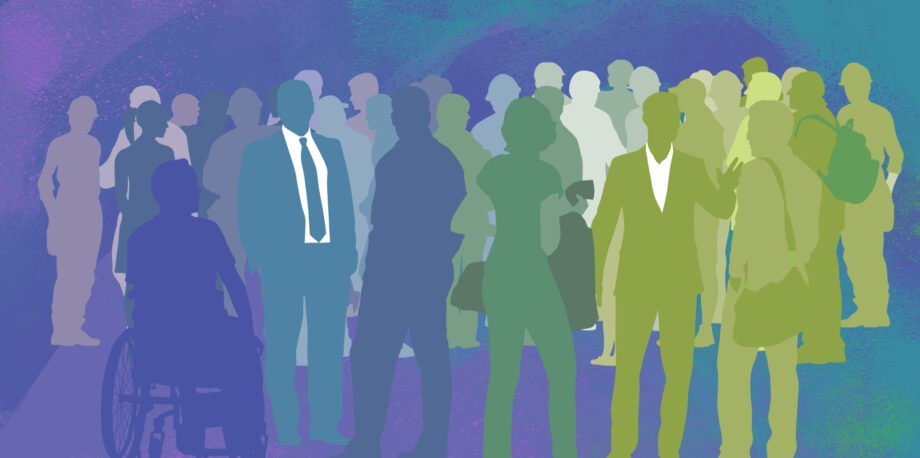June 28, 2019 — If you’re paying attention to climate change or politics, you’ve almost certainly heard of the Green New Deal. It’s ambitious. It’s inspiring. It takes on two of the biggest crises of our time — climate change and economic inequality — and proposes a way forward that just might be up to the task of dealing with both. And it calls for transformational change: changing the structure of how a system works.
But can it deliver? Based on my research on how to drive transformational change, I think it can. But in order to do so, it needs to continue to gain traction on two key elements that make such change possible.
People can feel big change is needed, but the path forward is not clear. The Green New Deal offers a potential path forward.
The first key ingredient in transformation is fertile ground — a widespread understanding that things are becoming untenable and something has to change. The timing is ripe in the case of the climate crisis. Massive, global scientific reports on the dangers we face have recently been published (examples here and here), youth climate activism around the world is on the rise, and climate change is becoming an increasingly salient issue for U.S. voters. It’s also ripe with respect to wealth inequality, which is at historic highs in the United States. The success of the Green New Deal will depend on continued and increasing frustration about climate and inequality. In short, people can feel big change is needed, but the path forward is not clear.
The Green New Deal offers a potential path forward. Importantly, it starts by asking what is necessary, rather than what seems possible. By definition, transformation means a fundamental change in the system, so asking what is possible in the current system is not a likely path to transformation.
The second key ingredient is the presence of a “collective” — a large, intentionally organized group — at the center. Transformative change takes more than an individual, or even a group of individuals. It doesn’t simply capture the imagination of many people; it offers ways for people to contribute. In a collective, individuals are involved as more than members or employees. They make identity with the collective a core part of who they are and what they do. A collective develops a shared identity around a shared purpose, and can take the grassroots energy bubbling up around an issue and focus it in ways that turns it into powerful transformational work.
The collective at the roots of the Green New Deal is the Sunrise Movement — an American element of a thriving global youth climate movement. The Sunrise Movement grabbed onto the Green New Deal idea and took bold action — most memorably occupying the office of House Speaker Nancy Pelosi during the orientation of new members of Congress. Since then, Sunrise has been organizing around the Green New Deal all over the country, recently wrapping up the Road to the Green New Deal Tour that included more than 200 town hall meetings.
Will we, as a nation, rise together to channel the vast resources we have into the collective project of remaking our future in the face of the climate crisis in ways that enable all of us to thrive?
Importantly, the energy and action behind the Green New Deal has grown beyond the Sunrise Movement. The Green New Deal exists at the federal level not as an overly prescriptive policy proposal, but rather as a resolution that balances broad, shared purposes (addressing climate change and economic inequality) with some, but not all, specifics (e.g., fast decarbonization through rapid expansion of renewable energy, building upgrades and energy efficiency combined with millions of good-wage jobs).
At the same time, local- and state-level green new deal proposals also have been introduced around the country. These changes are examples of how the Green New Deal is already changing mainstream conversation and practice. The changes are early evidence of the Green New Deal’s transformative power.
Where to From Here?
But in order to succeed, the collective behind the Green New Deal needs to expand even more. Essentially, the Green New Deal needs to make the leap to shaping the United States into a collective in order to fully realize the plan’s potential for driving transformation.
More specifically, a wider swath of Americans would need to work together as a collective across partisan, racial, economic, geographic and other differences on the shared purpose of addressing climate change and inequality with the necessary urgency the Green New Deal lays out. Importantly, this shared work needs to fully value different people, both in the form of contributions and impacts.
Given the extreme polarization in American politics, this turn toward more of a collective identity looks like another transformational change. So, the biggest question I have around the success of the Green New Deal is whether we the people are capable of working together in such a way. Will we, as a nation, rise together to channel the vast resources we have into the collective project of remaking our future in the face of the climate crisis in ways that enable all of us to thrive?
The path forward requires both the urgency and scale of ambition of the Green New Deal, and revitalizing the collective identity of Americans as a people who can take on big challenges together. Making progress along this path will be hard — transformational change always is. It will also be uncomfortable, because we need to learn how to work with and value each other in fundamentally different ways.
People will need to prioritize their identity as Americans working together to secure our collective future while keeping the focus on the urgency of addressing climate change and inequality. The Green New Deal has already helped change public debate. The question is, are we capable of delivering on its potential?
Editor’s note: The views expressed here are those of the author and not necessarily of Ensia. We present them to further discussion around important topics. We encourage you to respond with a comment below, following our commenting guidelines, which can be found on this page. In addition, you might consider submitting a Voices piece of your own. See Ensia’s Contact page for submission guidelines.
Kate Knuth was formerly the director of the Boreas Leadership program at the Institute on the Environment (IonE) at the University of Minnesota, which is where Ensia is based and which provides funding to Ensia. Ensia is an independent publication of IonE. To read more about the relationship between Ensia and IonE, please see our Ethics Statement under the section “RELATIONSHIPS.”
Related Posts
Ensia shares solutions-focused stories free of charge through our online magazine and partner media. That means audiences around the world have ready access to stories that can — and do — help them shape a better future. If you value our work, please show your support today.
Yes, I'll support Ensia!




